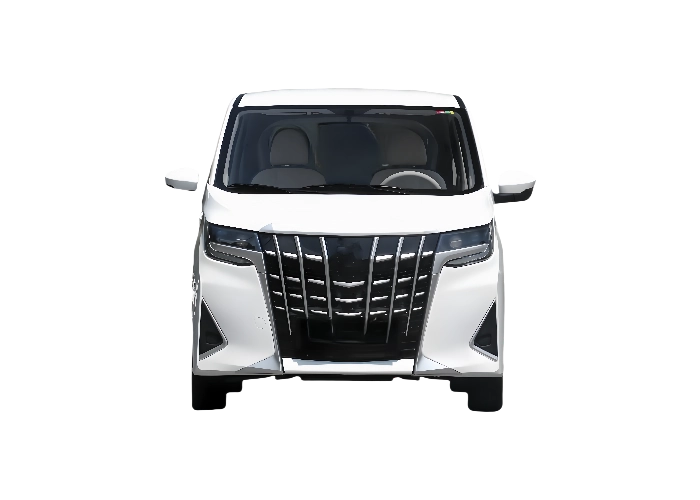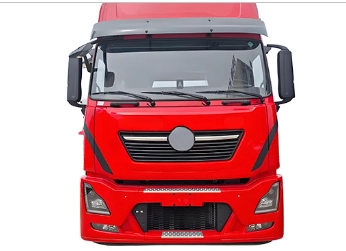In today’s fast-changing car world, the term “complete vehicle” is a big deal. It’s not just a fancy phrase—it’s super important for making cars, following rules, shipping vehicles overseas, and working with partners. For companies like Shandong Tairui, knowing and delivering a complete vehicle is the heart of creating products and keeping customers happy.
So, what does “complete vehicle” really mean in the car industry? This article explains it from a rules, technical, and real-world view. We’ll also show why it matters for car makers, assemblers, and buyers around the globe.

What Is a “Complete Vehicle”?
Rules and Definitions Around the World
In legal terms, a “complete vehicle” is a car that’s fully built and meets safety, emissions, and working standards.
- EU Rules: In the European Union, a complete vehicle is one put together in one go by one company. It’s ready to drive on the road without needing extra parts.
- S. Rules: In the United States, according to groups like the EPA and NHTSA (check 40 CFR §1036.801), a complete vehicle has a frame, engine, cab (if needed), and other parts. It’s set for testing and can be registered.
Basically, a complete vehicle is good to go for final checks, official tests, and use on the road without any changes.
From Start to Finish: Building a Complete Vehicle
Car makers follow a clear plan to turn an idea into a finished, approved, and ready-to-ship complete vehicle.
V-Model Engineering Method
At Tairui, the building process uses the V-Model, a trusted way to design cars used by companies worldwide. It goes like this:
- Planning and designing the whole system.
- Working on smaller parts (like body panels, lights, or the frame).
- Putting everything together and testing it.
- Checking the complete vehicle to make sure it’s perfect.
This method helps Tairui make sure every piece—from LED lights to full body kits—fits and works just right in the final vehicle.
What Makes a Vehicle “Complete”?
1. Technical Completion
For a vehicle to be called “complete,” it needs to hit key building steps. It must have a strong frame or chassis, a working engine or electric motor with a transmission, and a driver’s area or cab that works. Plus, other systems like lights, wires, and brakes need to be installed and ready to use.
Tairui goes even further. The company builds big, carefully designed body kits for all kinds of vehicles. For example, they make retro car bodies like the Volkswagen Type 2 and Toyota FJ40, flexible frames for new energy microcars, and tough cabs for heavy trucks like the HOWO Commander T3 and Dongfeng Tianlong KL. Each part is made to fit perfectly with other vehicle systems, so the vehicle is strong and fully functional.
2. Following Rules
A complete vehicle also has to follow strict rules, which differ from place to place but focus on safety, the environment, and quality. Cars need to be safe in crashes, have working lights, and protect people inside. For gas or hybrid cars, controlling emissions is a big deal.
Tairui makes sure everything meets these rules with a strong quality system. They have over 70 trained workers checking products and use CNAS-approved testing labs. The company has certifications like ISO 9001, IATF 16949, and CCC. Their lighting products meet ECE and DOT standards. Whether it’s one part or a whole vehicle, Tairui tests everything to match local and global rules.
3. Ready for the Market
A complete vehicle isn’t just built—it’s ready to sell and use. It’s set for shipping, can clear customs as a completely built-up unit (CBU), and is good to go for customers right away.
Tairui has ten factories across eight provinces, so they can deliver fast and adapt to different needs. Whether clients want a full complete vehicle or a nearly done platform for local finishing, Tairui adjusts to fit country rules and customer schedules. This makes sure vehicles are not just road-ready but also business-ready.
Why “Complete Vehicle” Is a Big Deal
Knowing what a “complete vehicle” means helps car makers and their suppliers work better together. For example, Tairui provides:
- Top-quality LED headlamps that work with vehicles from brands like JAC, Geely, and Foton.
- Cab kits and metal body parts made to exact customer needs.
- Door panels, roof parts, and inner frames that fit into vehicle building steps.
This flexible, customer-focused supply system matches the timeline and quality needs of a complete vehicle.
For Exporters and Global Sellers
Different countries have rules about how vehicles are shipped:
- CBU (Completely Built-Up): Fully done, approved, and ready to register.
- CKD (Completely Knocked Down): Sent as parts for local assembly.
- Cab-Complete or Incomplete Vehicles: Need extra work, like adding lights, interiors, or cargo areas.
Tairui’s export system offers options like neutral or custom branding, OEM/ODM services, and modular delivery (like cab plus cargo box combos). This helps overseas clients meet local assembly rules, save money, and follow regulations.
Fast and Easy Ordering Process
Tairui makes ordering parts quick and simple. Whether a customer needs 10 LED headlamps or 500 insulated truck boxes, Tairui delivers on time:
- First reply: within 12 hours.
- Design and sample: 7 to 10 days.
- Mass production: 30 to 60 days.
- Delivery: on time, with all papers (certificates, test reports, packing lists).
This clear process helps buyers plan. It covers their orders and even helps with import rules.
Trusted by Big Car Makers
Tairui works closely with major brands like BMW China, Geely, Dongfeng, and Foton. These long-term partnerships show Tairui’s reliability and quality in building complete vehicles and parts.
Conclusion: More Than a Word—A Sign of Quality
Understanding what makes a “complete vehicle” isn’t just helpful for rule-makers or car builders—it’s key to ensuring vehicles are safe, follow import/export laws, and keep customers happy across the car industry.
At Shandong Tairui, we don’t just talk about complete vehicles—we create them. Whether you’re a car maker, a global seller, or someone modifying vehicles, Tairui offers custom solutions to take your business from parts to platforms, from assembly to the road.
FAQ
Q1: What’s the difference between a “complete vehicle” and a “cab-complete” vehicle in Tairui’s products?
A:A complete vehicle is fully built and ready to drive, with all systems like lights, engines, body panels, and interiors. A cab-complete vehicle has the cab and chassis but leaves room for extras—like cargo boxes or refrigeration units—that local builders or clients can add.
Q2: Can Tairui customize vehicle parts to meet country-specific rules (e.g., EU type-approval, GCC standards)?
A: Yes. Tairui offers OEM/ODM services and adapts parts like lighting, sizes, and designs to meet rules in places like the EU, Southeast Asia, and the Middle East. Their engineering team works with clients to ensure everything passes local tests.
Q3: How long does it take to get a complete or cab-complete vehicle from Tairui after ordering?
A: It depends on the order size and customization. Standard parts can have samples in 7–10 days. Full vehicles or body kits usually take 30–60 days to produce. Tairui ensures on-time delivery with all needed shipping and customs papers.

